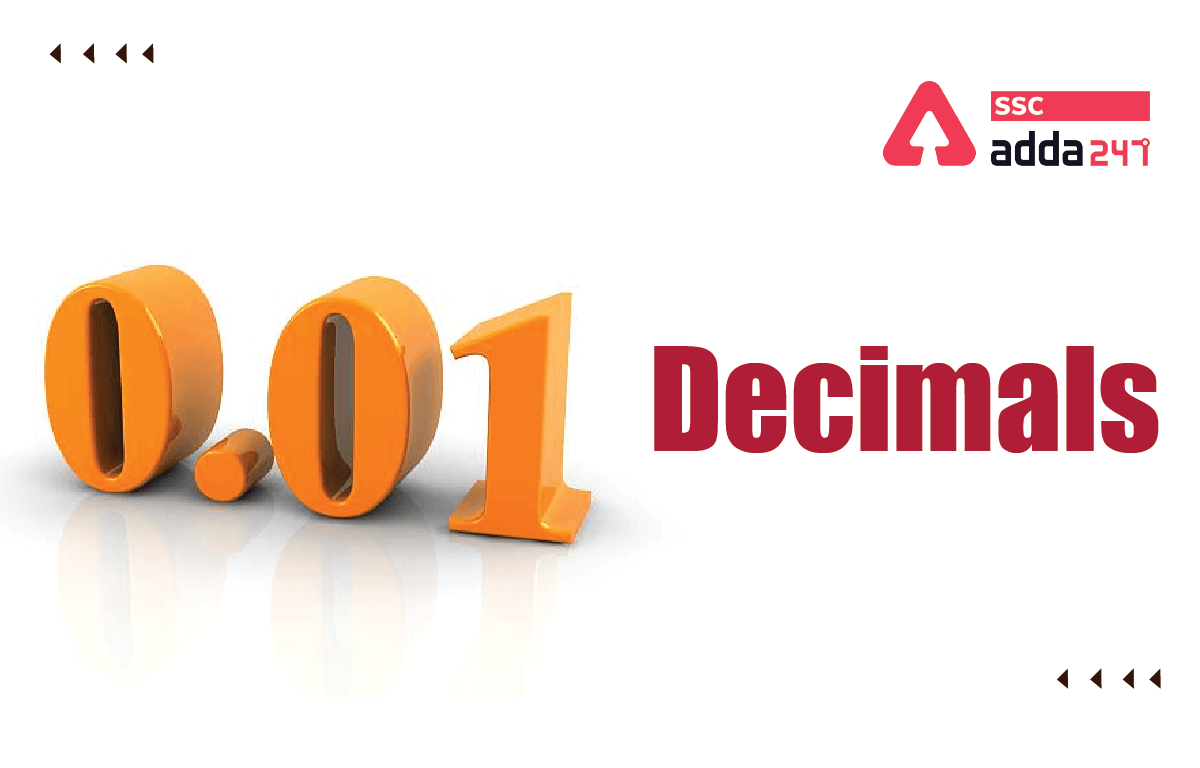Table of Contents
The word decimal has its origin in the root ‘deca’ which means 10. So the decimal is also known as the base-ten numerical system. The need for such a system arose when the already existing number and integer system was not capable of representing the more complex and large results obtained by division. A decimal is a direct representation of a fraction where the denominator does not divide the numerator completely. In this article, let us explore the various aspects of the decimal numeral system.
Decimals
There are various types of numbers in the quantitative aptitude section which include real numbers, natural numbers, whole numbers, rational numbers, integers, prime numbers, even numbers, odd numbers, and so on. Decimal is the standard form of representing integers and non-integers. The decimals are used in solving most quantitative aptitude problems. Understanding the Decimals, their types, formulas, and tricks will help the candidates in competitive exams like SSC, Railways, UPSC, and other state exams as well.
Decimals are the numbers that have the whole numbers and the fractional part, separated by the decimal point. The decimal is denoted by “.”. The dot in between the whole number and the fractional is called a decimal point.
54.7
Here 54 is the whole number and 7 is the fractional part. The dot or “.” between them is called a decimal point. The 5 is Tens, 4 is the ones and 7 is the tenth.
Decimals Numbers
The decimal numbers are differentiated as,
1. Recurring Decimal Numbers
There are two types of Recurring Decimals i.e. finite and infinite decimal numbers. Candidates will understand this with the following example.
- 4.134134 (Finite)
- 4.13131313 (Infinite)
2. Non-Recurring Decimal Numbers
The decimals that are not repeating are called Non-recurring Decimal Numbers. The nonrecurring are differentiated between Finite and Infinite.
- 4.6547 (Finite)
- 4.675787….(Infinite)
Arithmetic Operations on Decimals
The following operations can be performed on the Decimals alike the other numbers. The arithmetic operations are addition, subtraction, division, and multiplication.
Addition
Adding up the decimal numbers, arranging the decimal points of the given numbers, and add the numbers. If a decimal point is not visible.
Subtraction
Subtraction is just like the addition of decimal numbers. You have to line up the decimal point of the given numbers and subtract the values.
Division
Simply divide the integers as there is no decimal point. Perform the division and place the decimals at the end.
Multiplication
Multiplying two decimal numbers is so simple. Multiply as if there is no decimal point present between the whole number and the fraction.
Decimals to Fractions
To convert a decimal to a fraction, place the decimal number over its place value. For example, in 0.9, the nine is in the tenth place, so we place 9 over 10 to create the equivalent fraction, 9/10.
A Special Decimal (Pie)
Pie is defined as the ratio of the circumference and the diameter of a circle. In fraction, it is represented as 22/7 which when translated into decimal is 3.14159265359 which can go on to numerous places as it is a non-recurring decimal. However, for ease of the calculations in mathematics, we use the value 3.14. The use of pie is seen most in the geometry and mensuration chapters of the quantitative aptitude syllabus.
Some Famous Decimals
- g – Acceleration Due to Gravity = 9.8 m/s2
- G – Gravitational Constant = 6.6743 × 10-11 m3 kg-1 s-2
- c -Speed of Light = 2.997 X 108 m/s
- NA – Avogadro’s Number = 6.02214 X 1023



 SSC Calendar 2025 Under Review, Revised ...
SSC Calendar 2025 Under Review, Revised ...
 Upcoming Government Exams, Complete Govt...
Upcoming Government Exams, Complete Govt...
 Govt Jobs 2025, Latest Upcoming Governme...
Govt Jobs 2025, Latest Upcoming Governme...


